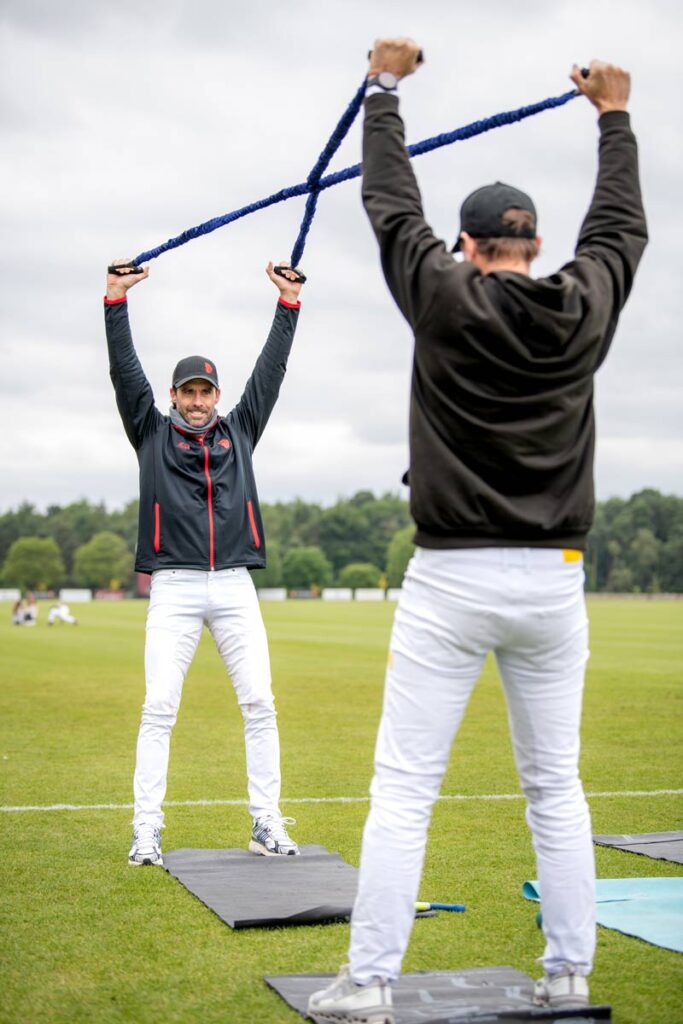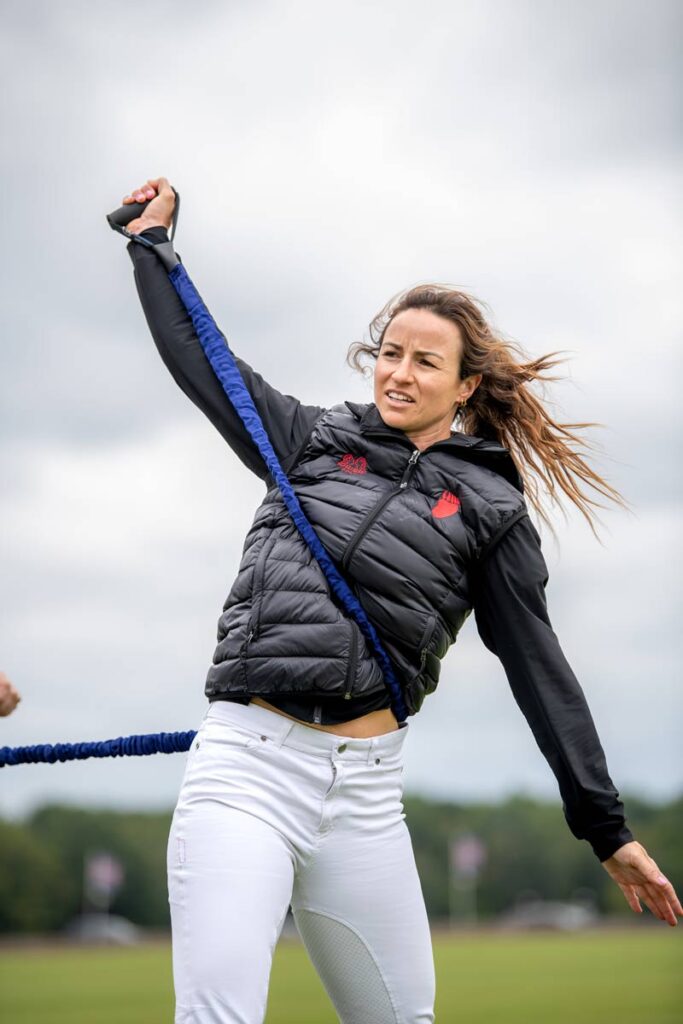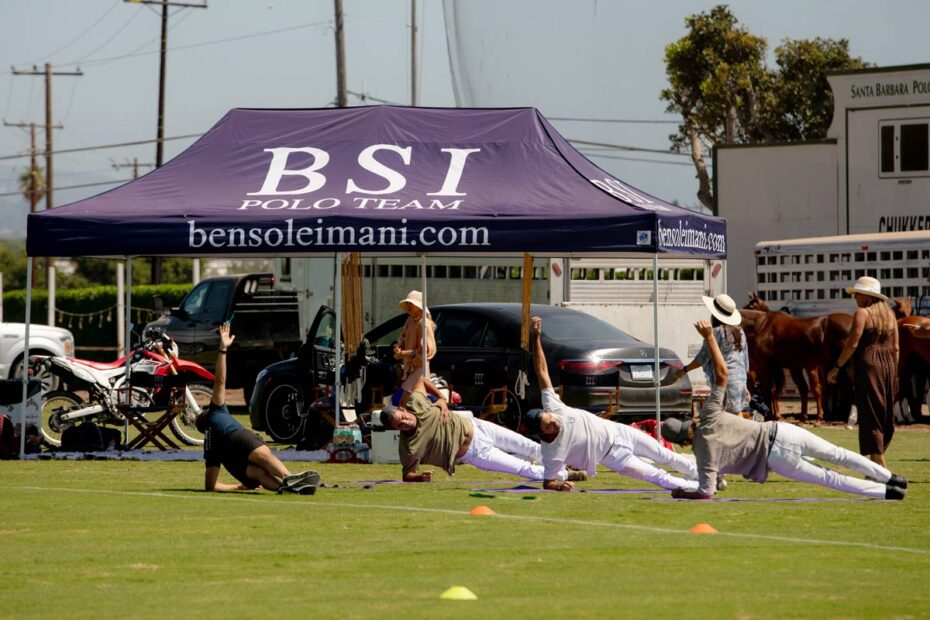Across the many years that polo has been a regulated sport, there have been countless polo legends who have achieved the coveted ten-goal status and even achieved the honor of being selected for the Polo Hall of Fame. However, with the many efforts being made to spread awareness about polo and making the sport more accessible, there are not only more polo icons rising through the ranks, but also young polo stars like Poroto Cambiaso, Hope Arellano, and the Escobar brothers who are challenging veteran players on the international stage and raising the bar of competition everyday. To compete on this ever rising level, polo players have begun to look more closely at health, wellness, and new training methods to improve their performance on the field.
Fitness Training
As any professional or beginner player will tell you, time in the saddle is critical to improving in the sport of polo. Many pros ride everyday on multiple horses, especially those who train and breed their own polo strings. However, polo is an incredibly rigorous sport that requires balance, flexibility, and strength in muscle groups that riding alone cannot train and other typical kinds of weight lifting training can’t account for. To account for this deficit in training, team trainers, like Martin Perez with teams like La Indiana and India Parker Smith with Team La Fe, have become a common sight at high goal tournaments and practices.
Multiple days a week, trainers coach professional polo teams and individual players in exercises that focus on strengthening the many muscles taxed by the sport, increasing flexibility for injury prevention and performance, and working on heightening reaction time for faster, more intuitive play.

Some of the most important muscle groups these trainers focus on are the core, wrists and forearms, legs, and hips. The core is critical because it not only is a crucial component to swinging the mallet, but is a foundational piece of an athlete’s balance. Without a stable core, riders struggle to hold themselves upright, which puts the lower back into a compromised position. Mobility in the wrists and strength in the forearms is necessary to quickly turn the mallet head to adjust the direction of the shot, juggle the ball for long distances, and sustain strong hooks against the mallet without the forearms and wrists tiring across the duration of an intense match. In addition, the legs and hips are some of the most consistently activated muscle groups in riding, as the strength and stamina required to hold a rider in the saddle or above it, are working at all times.
By using a variety of training methods and movements like yoga, abb routines, squats, and other weighted or bodyweight exercises, polo players not only become stronger and increase their endurance, but also are more likely to avoid injury and have longer, pain free careers. Another cornerstone of polo fitness is flexibility. While yoga is a great way to train flexibility, many trainers also apply weights in strenuous positions to help deepen a stretch, like carrying weights while doing toe touches or applying pressure to the legs and hips in yoga poses. Flexibility not only makes all movements smoother, but also makes mounting and dismounting more comfortable, and helps to actively repair the muscles, ligaments, and joints.
All of this work outside of match days, including playing handball and other hand-eye coordination games to improve reaction time, comes together during tournaments in the pre-game warmup and post game cool down that so many players can be seen demonstrating on the sidelines. Many of these warmups begin with a way to get the blood pumping, like a light jog or another active game. Once the muscles are warmed up, athletes are often seen using resistance bands to put a light strain on the muscle to prime them for the intensity of the game. This is also coupled with light weight lifting or an ab routine to engage the core. Lastly, players will stretch, or be assisted in stretching by the trainers. After the game, teams focus mostly on active stretching. This often looks like walking lunges, held squats, and other fast paced stretches, which activates and keeps the muscles loose, while also stretching and relaxing any sore areas. These moments before and after the game are a practical exhibition of all the work put in outside of matches that are taking players to the next level.

Polo Simulators
While fitness training is proving to be effective in improving performance and becoming increasingly popular, it cannot replace or replicate the benefits of riding horses and stick-and-balling everyday. However, this is not always attainable for beginner riders or those who can’t travel to areas where polo is always in season. But, with the help of new technological advancements in the equestrian world, riders now have access to polo simulators.
Although wooden horses and hitting cages have been used to practice the many mallet movements required in polo. These aids cannot replicate the motion, speed, and rhythm of the polo pony. Similar to how athletic trainers saw a deficit in the physical training available to polo athletes, engineers and entrepreneurs saw an opening to utilize technology to create an upgraded wooden horse and hitting cage. This polo simulator, at its basis, uses a model of horse that is able to rock and move to imitate the movement of a horse. The model horse has two running tracks placed alongside it so that a polo ball can roll continuously for a player to hit at speed. This whole setup is surrounded by a hitting cage that feeds the balls back to the running track. This whole construction is elevated through the use of sensors that respond to the use of the reins, the riders legs, and other pressure points so the model and simulator can respond as a polo pony would. These sensors then track the performance of the rider in real time so that the player can receive immediate feedback on their performance. Though these simulators are costly, they are an exciting representation of new developments in the polo world that will further accessibility to the sport and continue to raise the bar of competition.
Written in collaboration with Lily Brennan
